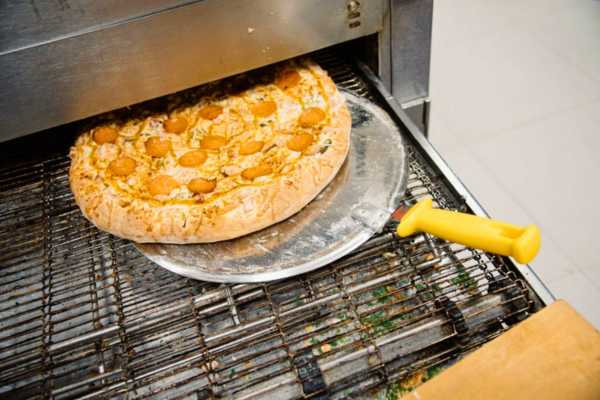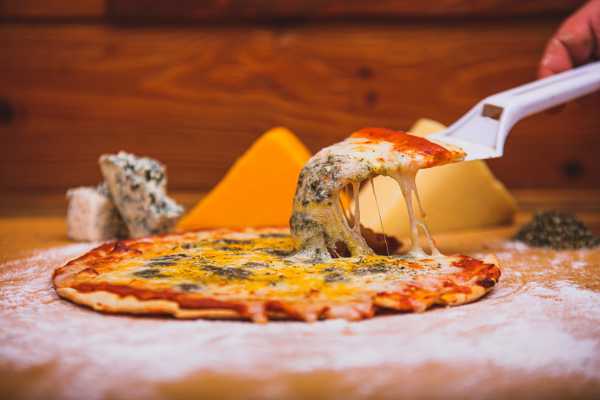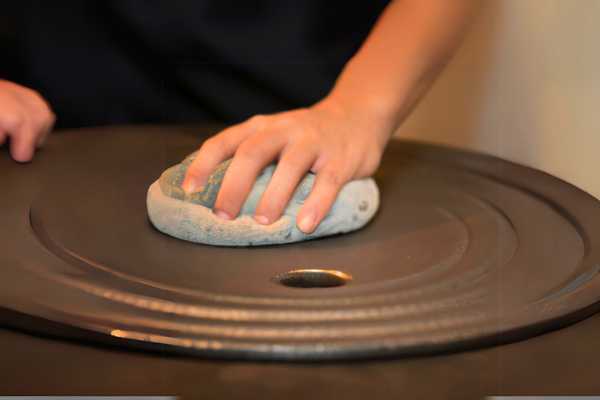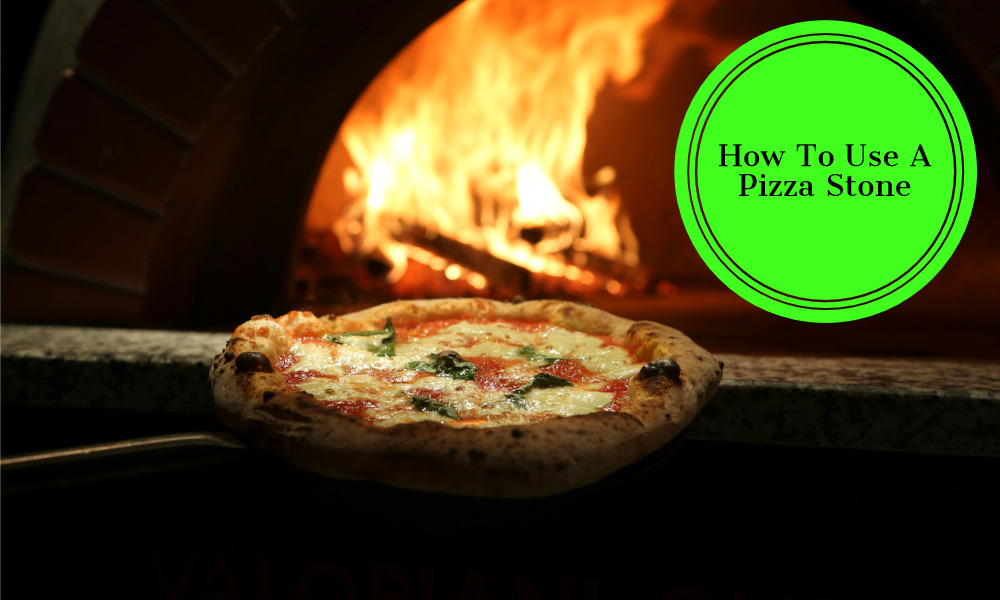A pizza stone, often crafted from ceramic, cordierite, Or clay, Is a culinary marvel that transforms the average home oven into A semblance Of a brick pizza oven. By providing even heat distribution and drawing moisture away from the surface. The pizza stone is instrumental in producing A perfectly crispy crust reminiscent of professional pizzerias. For both seasoned chefs and casual home bakers, understanding how to utilize this tool is key to achieving the pinnacle of pizza perfection right in the comfort Of one’s kitchen.
What Is A Pizza Stone?

A pizza stone is a flat slab, Typically made of ceramic, cordierite, Or clay, designed to replicate the high-heat environment Of a brick oven in standard home ovens and grills. Used primarily for baking pizzas, It ensures an even distribution of heat, preventing hot spots And promoting A crispy crust by drawing out moisture from the dough. Due to its heat-retaining properties, It can produce results that mirror the texture and flavor Of pizzas baked in professional ovens, making it A popular tool among home bakers and pizza enthusiasts.
Understanding What A Pizza Stone Is

A pizza stone is A culinary tool, often crafted from ceramic, cordierite, Or clay, shaped into A flat slab to emulate the effects Of a traditional brick oven in regular home ovens and grills. Its primary role is to evenly distribute heat, curbing the formation Of hot spots. And simultaneously absorb moisture from the pizzas dough, leading to A delectably crisp crust. This capability to maintain And conduct high temperatures ensures that pizzas baked on such stones closely resemble those from professional pizzerias in texture and taste, making it An indispensable asset for pizzas aficionados and home bakers alike.
Benefits Of Using A Pizza Stone
- Even Heat Distribution: Pizza stones distribute the oven’s heat uniformly, preventing hot spots And ensuring the entire pizzas bakes evenly.
- Crispy Crust: The stone’s porous nature pulls moisture away from the pizzas dough, resulting in A crispier and more authentic crust.
- Heat Retention: Pizza stones retain heat very well, making for consistent baking conditions, especially when cooking multiple pizzas in succession.
- Versatility: Beyond pizzas, These stones are excellent for baking bread, pastries, and other baked goods that benefit from A consistent heat source.
- Improved Flavor: The consistent and high heat can enhance the overall flavor of the pizzas, giving it A charred and smoky taste similar to brick oven pizzas.
- Durable: With proper care, good pizzas stones can last for years, making it A valuable addition to A kitchen.
- Cost-Efficient: By achieving pizzeria-quality results at home, You can save money on takeout Or dining out.
- Enhanced Browning: Perfect for achieving A golden-brown crust on your baked goods, enhancing both texture and flavor.
Remember, While pizzas stones offer numerous benefits, It’s essential to handle and care for them correctly to maximize their lifespan and performance.
Enhanced Crust Quality
Enhanced crust quality is one Of the standout benefits of using a pizza stone. The stone’s unique heat absorption and retention capabilities create the ideal baking environment, akin to professional brick ovens. By drawing out moisture directly from the dough and providing A consistent, high-heat surface, the stones ensures that the crust achieves a golden-brown hue, a delightful outer crispness And a tender interior. This transformative effect elevates the texture and flavor profile Of the crust, distinguishing homemade pizzas And baked goods from their conventionally baked counterparts. And offering a taste experience that resonates with authentic pizzeria quality.
Improved Heat Distribution
Improved heat distribution is A hallmark advantage of utilizing A pizza stone. Unlike conventional baking trays Or metal pans, This is specifically designed to absorb and then evenly radiate heat across its entire surface. This uniform heat distribution ensures that every part of the food receives consistent thermal exposure, eliminating the usual hot spots that can cause uneven baking Or even burning. In the context of pizzas or bread, This translates to uniformly cooked toppings And an evenly browned crust. The reliable consistency offered by the stone’s heat distribution not only enhances the culinary outcome but also instills confidence in home bakers, assuring that each bake will achieve the desired perfection.
Preparing Your Pizza Stone For Use
1. Preheating The Stone

Before introducing any food to it, It’s essential to thoroughly preheat your pizzas stones. Place the stone in A cold oven, and only then turn on the oven to the desired temperature. By allowing the stones to gradually come up to temperature with the oven, You prevent potential thermal shocks which could cause the stone to crack. A well-preheated stone ensures that the base of your pizzas or bread starts cooking immediately upon contact. Which is pivotal for achieving that coveted crispy crust.
2. Placing The Pizza On The Stone

Once the stone is adequately preheated, It’s time to place your pizza on it. If you’re making pizza from scratch, It’s often recommended to build your pizzas on a pizza peel Or an inverted baking sheet dusted with flour Or cornmeal. This allows for A smoother transition when sliding the pizzas onto the hot stones. Alternatively, You can also roll out your dough directly on parchment paper and then transfer the pizzas along with the parchment onto the stones. Ensuring A swift yet gentle placement helps in preserving the heat Of the stones, maximizing the crispy outcome.
3. Correct Oven Temperature
Setting the right oven temperature is crucial for the best results. For most homemade pizzas, an oven temperature ranging from 475°F to 500°F (245°C to 260°C) is ideal. However, always refer to your specific pizzas recipe, As some might require adjustments.
A high temperature is key to replicating the conditions of professional pizzas ovens. Moreover, since the stones retain and radiate heat effectively, It continually supplies the pizza with the necessary high temperature, ensuring an evenly cooked crust and perfectly melted toppings.
Remember, the thicker the dough or the more loaded the toppings, slight adjustments in baking times may be needed. Always monitor your first few pizzas to get a feel for the perfect baking duration in your specific oven.
4. Using Cornmeal Or Flour
Dusting the base of your pizza or the pizzas peel with cornmeal or flour serves a dual purpose. Firstly, it acts as a barrier, preventing the dough from sticking to the stone or the peel, making the transfer smoother. Secondly, it imparts a subtle texture and flavor to the crust’s base, enhancing its rustic feel. Cornmeal, with its coarser texture, often provides a slightly crunchier base than flour.
5. Letting The Stone Cool Down

After baking, It’s essential to allow the pizzas stones to cool down naturally inside the oven. Rapid temperature changes can lead to thermal shock, which might cause your stones to crack or warp. Always resist the urge to rinse or submerge a hot stone in water or place it in a cooler environment immediately after use.
6. Cleaning And Maintaining Your Pizza Stone

Regular maintenance ensures the longevity and efficiency of your pizzas stones. Unlike traditional pans, It become more seasoned with time, often resulting in a darker appearance. Which is entirely normal and even desired by many.
7. Cleaning After Use
Once the stones have cooled completely, use a stiff-bristled brush or plastic scraper to remove any stuck-on food residues. If needed, you can wipe the stone with a damp cloth. Avoid using soapy water, as the porous nature of the stones can absorb the soap, potentially affecting the flavor of your next bake.
8. Preventing Cracks And Damage
To prevent cracks and prolong the life of your pizza stones, always preheat the stones with the oven and let it cool down naturally inside the oven. Avoid exposing it to drastic temperature changes, and never place a cold stone in a hot oven or vice versa. It’s also recommended to position the stone in the middle rack of the oven, where heat distribution is most even. Furthermore, while it’s tempting to slice the pizzas directly on the stones, using a pizza cutter on its surface can cause scratches. It’s best to transfer the pizzas to a separate board or plate before cutting.
Can I Use Soap To Clean My Pizza Stone?
Using soap to clean a pizza stone is generally not recommended. The pizzas stone’s porous nature means it can absorb the soap, which can then potentially be transferred back to your food during subsequent bakes, affecting its flavor. Instead, it’s best to rely on plain water and a stiff-bristled brush or plastic scraper to remove any residual food particles. Over time, a stone will naturally darken and become more seasoned. Which is normal and can even enhance its non-stick properties. Rather than striving for a spotless stone, aim to maintain its integrity and flavor-preserving qualities by avoiding soap and strong detergents.
Do I Need To Preheat The Pizza Stone Every Time?
Yes, preheating the pizza stone every time you use it is crucial. These work best when it’s thoroughly heated, as this ensures that the dough starts cooking immediately upon contact, leading to a crispier crust. Placing the stones in A cold oven And allowing them to heat up gradually as the oven reaches the desired temperature. You not only achieve the best baking results but also reduce the risk Of thermal shock. Which can cause the stones to crack. This consistent preheating ritual ensures that the stone’s thermal properties are effectively harnessed, resulting in optimal baking outcomes every time.
Can I Use A Pizza Stone For Foods Other Than Pizza?
Absolutely! While the name implies A specific use, A pizza stone’s capabilities extend far beyond just pizzas. Its consistent heat distribution And moisture-wicking properties make it ideal for A range of baked goods. Bread, particularly artisan varieties And baguettes, benefit immensely from the stone’s even heating, resulting in A perfect crust And well-cooked interior. Additionally, It’s excellent for baking pastries, croissants, And even certain cookies, all Of which can achieve A delightful crispness. Beyond baked goods, It can also be employed to roast vegetables Or reheat leftovers, ensuring they regain some Of their original crispness rather than turning soggy. The versatility of the pizzas stones makes them A valuable tool in any culinary enthusiast’s kitchen.
Can I Cut My Pizza Directly On The Stone?
While it’s technically possible to cut your pizza directly on the stone, It’s not advisable. Using A pizza cutter or knife directly on the stones can lead to scratches. Which over time can weaken the stones and make it more susceptible to cracks Or breaks. Furthermore, These scratches can harbor food residues and become harder to clean, posing potential hygiene issues. Instead, It’s best to transfer your pizzas from the stones to A separate cutting board Or serving plate before slicing. This not only preserves the integrity Of your pizzas stones but also ensures a cleaner And more precise cut for your pizzas.
The Final Thoughts
Using a pizza stone can significantly elevate the quality Of homemade pizzas, replicating the crispy crust And even baking found in professional pizzerias. To harness its full potential, always preheat the stones in A cold oven, avoid rapid temperature changes to prevent cracking, And ensure A clean, soap-free maintenance routine. Beyond pizzas, The stone’s versatility shines through in baking bread, pastries, And other culinary delights. While it’s tempting to slice directly on the stones, transferring your creation to A separate surface for cutting ensures the stones longevity. With proper use and care, It becomes an invaluable tool for every home baker and pizzas enthusiast.
